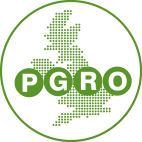Practice Abstract 14 - Developments that can influence European supply chains. Project deliverable 5.1. A summary of Chapter 4: Feed
Short title (native language):
Developments that can influence European supply chains. Project deliverable 5.1. A summary of Chapter 4: Feed
Short summary for practitioners (native language):
EU imports circa 30 mil t/yr Soya bean and meal products. Soya import values may increase due to international demand. Sharp price rises 2007-13 saw imports fall by 30%. Current prices are still 50-75 % higher than in 1999 but imports have increased again. Rising import prices raise the EU-grown protein crop values increasing the competitive position and reducing yield gap. Competitiveness of EU legumes and breeding:Investment in plant breeding and protein production is needed to reduce EU soya imports. The priority list is mentioned by the Focus group on Protein Crops of the European Innovation Partnership. Priority grain legumes for feed include soya bean, faba bean, field pea and lupins. Forage legume priorities include mainly alfalfa. Breeding of more competitive varieties is required but poor current EU market opportunities for legumes draw less commercial interest. A catch-22 situation of interdependency which EU policy may be used to break.
Integrating legumes into farming systems:
Assuming competitive legume crops are available, the introduction, expansion, and assimilation of legume benefits into EU arable systems is an important issue. With rising costs for N-fertiliser and animal feed, mixing clover with grass on pastures is getting more interest from dairy farmers. An interesting question is why Alfalfa is not grown more often on EU grasslands - it can be grazed or preserved as silage or hay. To replace soya bean in compound feed, inclusion levels of alternatives are likely limited, requiring a mixture of soya replacements. Legumes other than soya being used in non-compound feeds: whole cropping beans in the UK, as roughage and protein, faba beans for cattle and sheep and peas as forage feed. Locally Soya beans can be used as roughage.



